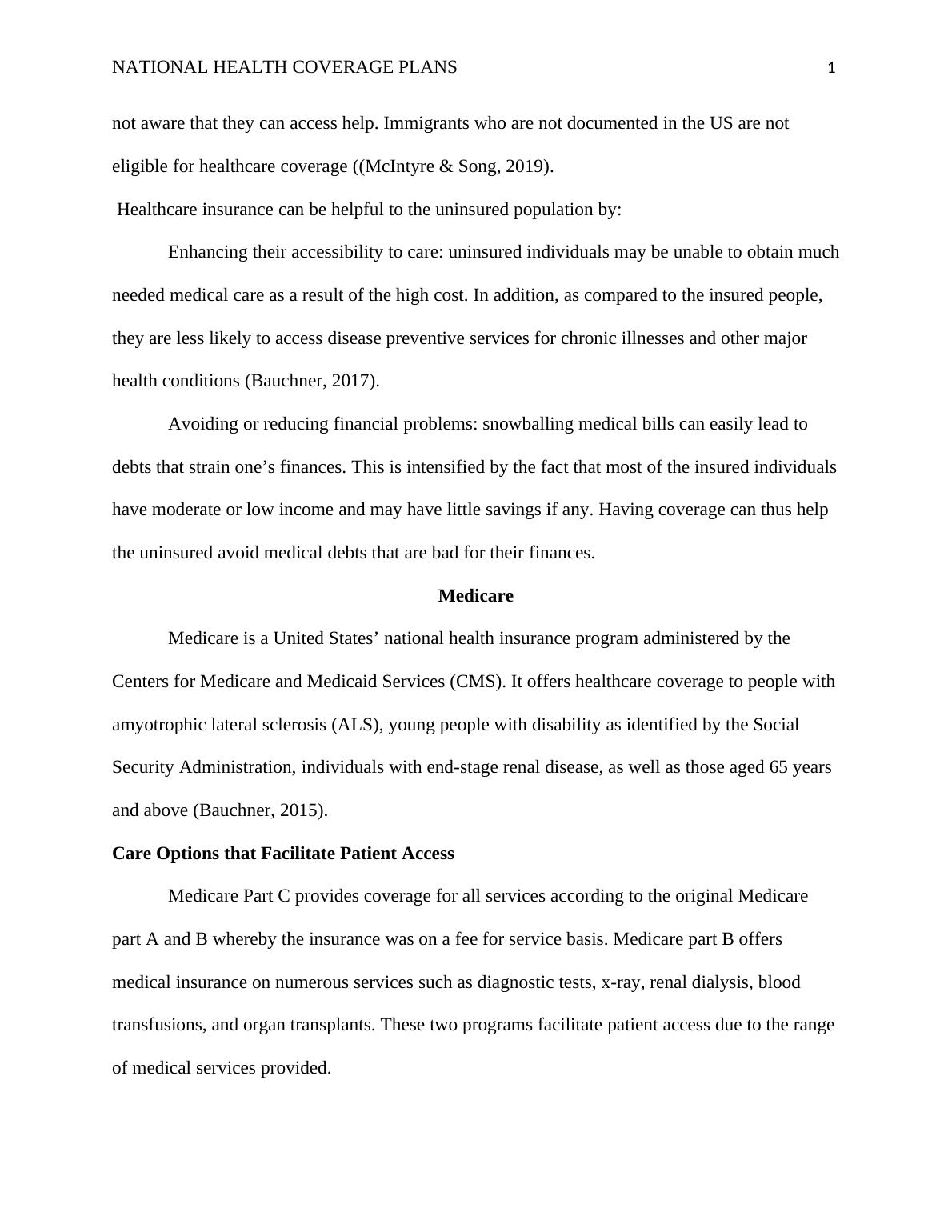National Health Coverage Plans, Reimbursements, and Quality
7 Pages1514 Words60 Views
Added on 2022-12-27
About This Document
This paper discusses two major healthcare coverage plans in the US and the care options under each. It also discourses healthcare coverage in relation to the vulnerable population.
National Health Coverage Plans, Reimbursements, and Quality
Added on 2022-12-27
ShareRelated Documents
End of preview
Want to access all the pages? Upload your documents or become a member.
U.S. Healthcare System Assesment Report
|2
|957
|18
Comparison of Healthcare Systems in the US and Great Britain
|6
|1391
|405
HEALTH INSURANCE POLICIES OF THE KAISER FAMILY FOUNDATION
|6
|1176
|43
Health Insurance Expansion: Impact on Adverse Selection and Economic Implications
|9
|2309
|446
Universal Health Care-Medicare-for-All
|10
|2300
|379
Assignment about Health Insurance
|7
|1564
|19



